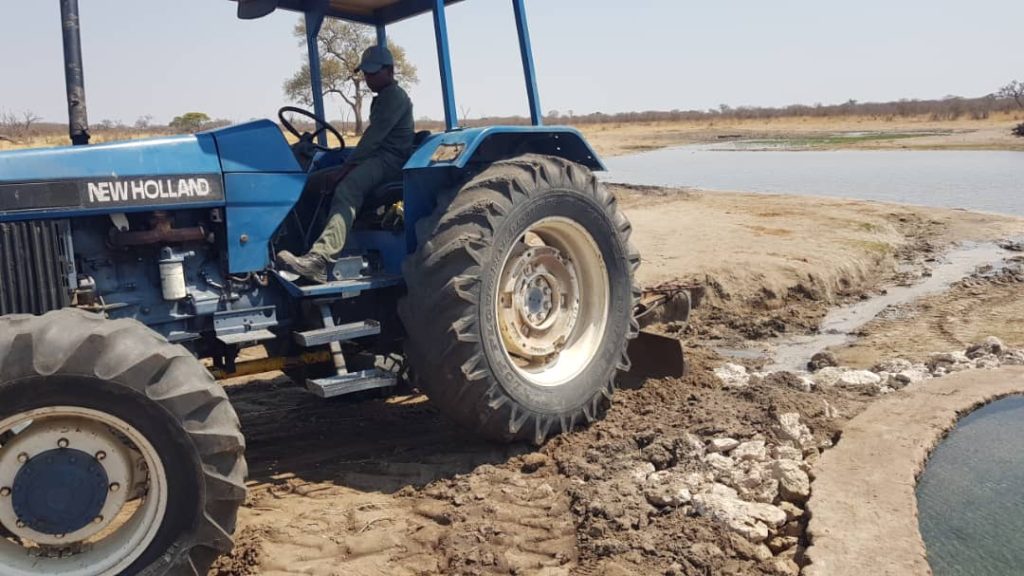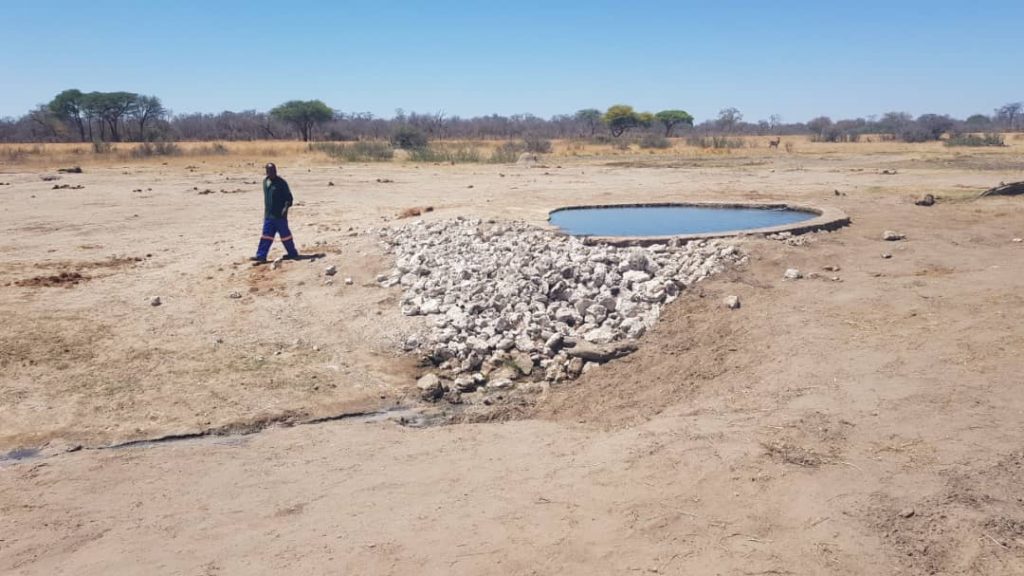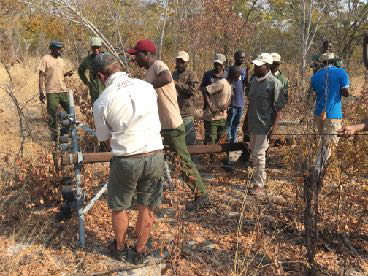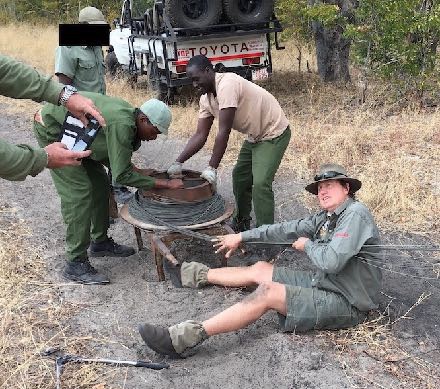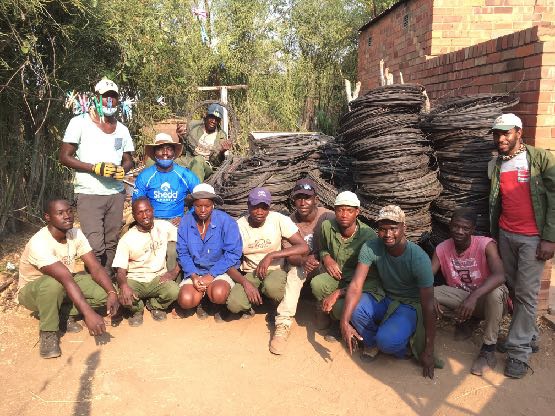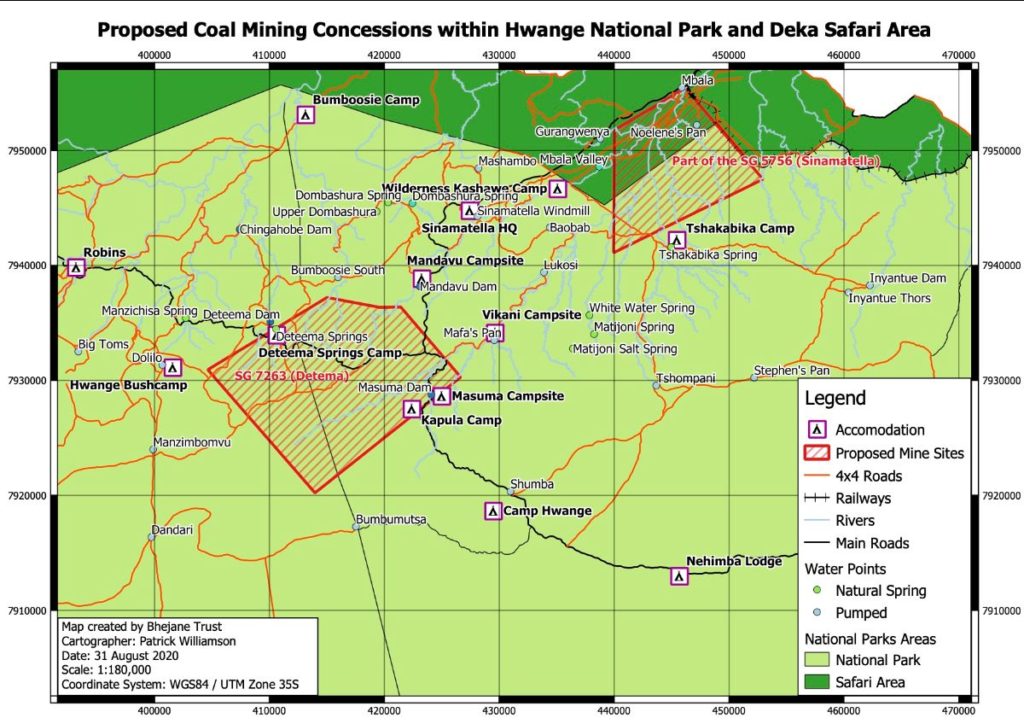
Reacting to public outrage and a legal challenge in early Sept 2020 against proposed coal mining within Hwange National Park, the Zimbabwe government has announced that “Mining on all areas held by National Parks is banned“. This is a landmark ruling not only for Hwange, but for all parks, and is excellent news. We await swift enactment of the legislation. In the meantime, we remain vigilant to any further incursions.
The Chinese embassy in Harare apparently issued a statement fully supporting the Zimbabwe Government in its ban on all mining in Parks, and stating that EIA and state Works documents, plus full transparency in all deals are essential, and suggesting the establishment of a compliance monitoring mechanism.
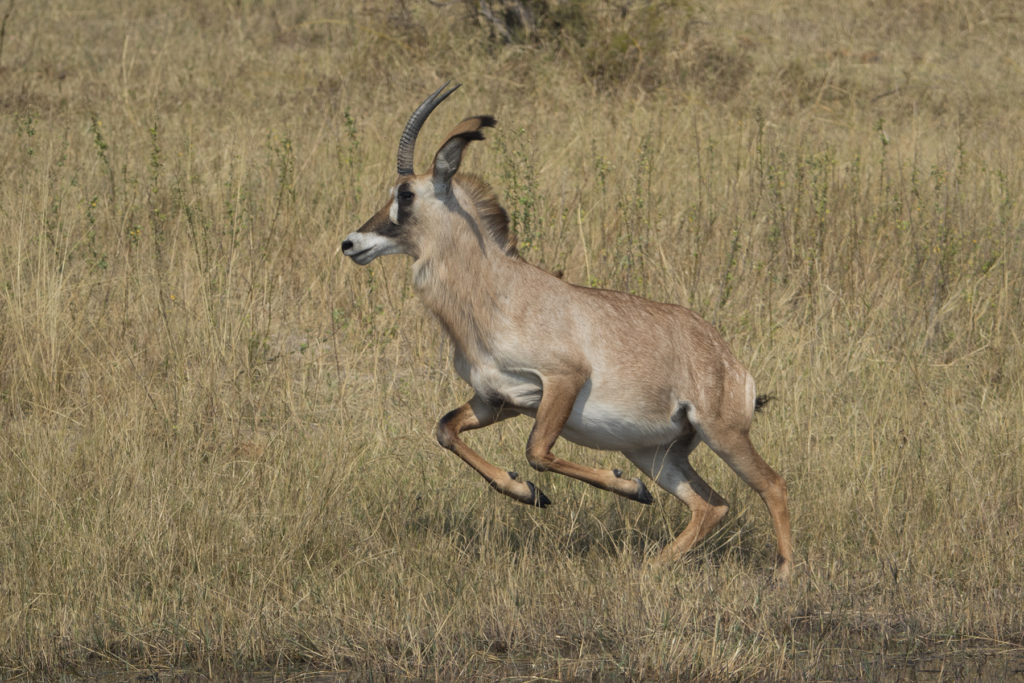
Roan Antelope
We have not experienced a year as dry as this one for many years. The influx of elephants from Botswana and the from south of the park has been unprecedented. As the weather heats up demand for water, not only for drinking but also for cooling purposes, increases drastically. Many of the water points have already been reduced to puddles of sticky mud, although the boreholes are being pumped at full capacity. The next six weeks before the onset of the rains seem set to be fraught with pressure to try to keep the show on the road!
A young male Roan Antelope was trapped in glutinous mud at Jambile Pan last week. He was removed very quickly by Gary and the FOH team and proceeded to show his gratitude by running full tilt straight at Gary, who had retreated to what he thought was a safe distance away. Gary was hammered into the dust, although luckily the animal’s horns missed injuring him and little damage was done asides from a few bruises and some stiffness the following day. In Gary’s words “Most ungrateful animal I have ever come across!! But he’s alive and safe at least!!”
Some of the troughs at the pans have been back-filled and reinforced to avoid collapse – essential ongoing work. At this stressful time of year, there is little time to rest.
Nyamandhlovu Pan
Water being pumped in to Nyamandhlovu Pan has been closed off and diverted to a depression on the left of the existing pan in order to dredge the pan to remove the extreme quantities of excess mud. This massive job requires use of serious earth moving equipment. The mud will be loaded onto trucks and transported some distance away to avoid it being washed back into the pan once the rains start. All possible water remaining in the “old” pan was pumped into the “new” pan, and with both boreholes operating 24/7, within 48 hours there was already a sizeable pool of clean water in the depression. About 100 Barbel and some Terrapins were translocated to Livingi and Dom Pans, the rest of these fish were moved to the new pan, so they can re-locate when the old pan refills with rain. The three enormous resident crocodiles have for the moment moved off to pastures greener. Although disruptive to the animals, the exercise is sorely needed in order to increase the holding capacity of this very important pan. The work needs to be completed before the rains start as the pan has to be empty and the mud somewhat dried out to be able do the job. As always, FOH will support and assist Parks staff wherever necessary.
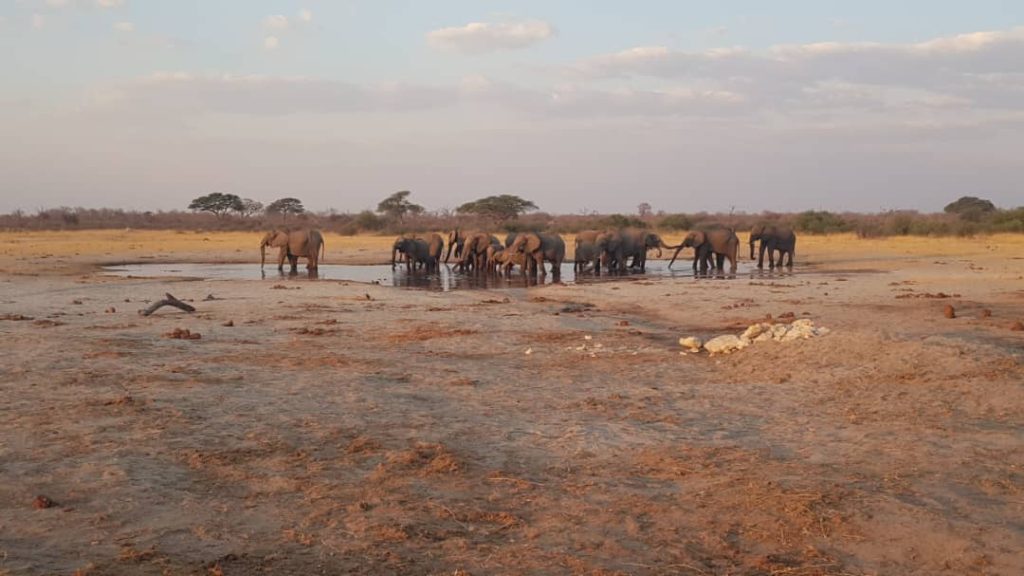
The “New” Pan 48 hours after starting to pump water
Anti-Poaching.
Paul de Montille and his Ukhozi scouts had some unanticipated but very welcome support from the Zimbabwean conservation community who assisted with telephone wire removal. This led to the speedy collection of a staggering quantity of potentially lethal snare-wires from in and around the Main Camp area.
The teams included several enthusiastic safari guides and their motivated safari lodge owners and operation managers. John Laing and his group of guides from Batoka Lodges Victoria Falls joined the D.A.R.T./Ukhozi Team to roll up and recover a record haul of 6.4km of phone wire in only 3hrs. Terry Anders of Iganyana Tented Camp and his guides together with some members of the Hwange Safari Lodge Staff also joined in.
James Varden’s group of masked riders and their horses, played a vital role in helping to uncover much of the fallen wire that has remained hidden and undetected for many years beneath the knee-high grass. The additional height advantage gained from the saddle made it much easier for the riders to see further through the bush and find wire hidden in the grass or tangled in the overgrown vegetation. As lunchtime approached the hungry guides couldn’t believe their luck when an Iganyana vehicle arrived bearing a scrumptious lunch of sadza, stew and relish professionally prepared by the Iganyana Camp chefs using fresh food produce that was generously donated.
Priority was given to the recovery of the fallen telephone wires. It was clear from state of the tangled bundles that many wild animals had already been caught up in the wire over the years and their desperate struggles for freedom could easily be imagined. Finding, untangling and rolling-up this dangerous wire was a frustratingly slow, time-consuming process but is also a very important aspect of the entire wire recovery project.
To date, the phone wire removal project has removed 426km of phone wire weighing 14.3 tons. This has potential to yield 141,700 potential snares.
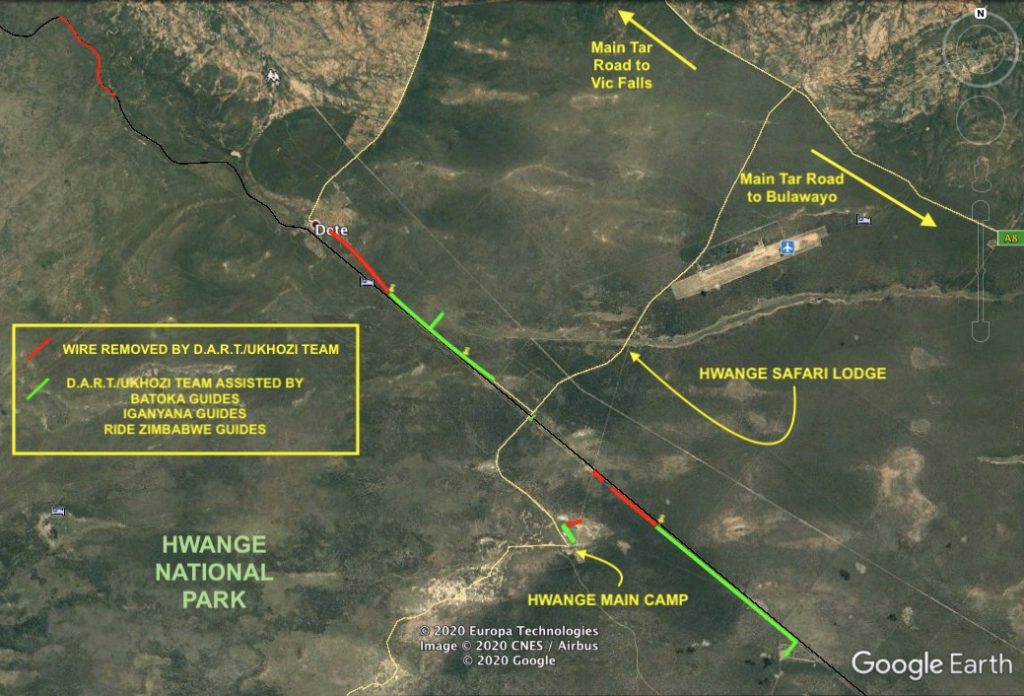
The provision of monthly food hampers for about 60 rangers and scouts working both inside and outside the park does much to raise and boost morale, as do the regular supplies of drugs and other necessary medical provisions for the Main Camp Clinic.
Our grateful thanks to all volunteer helpers and fresh food donors, to our regular donors far and wide, and to SACT, the Educasa Foundation, Hwange Conservation Society UK and SARF (Australia). The collective effort of many make this all possible. Let’s keep up the momentum and the good work!
Friends of Hwange is committed to ensuring the future of the Park and its wildlife. Contributions are always most gratefully welcome.
